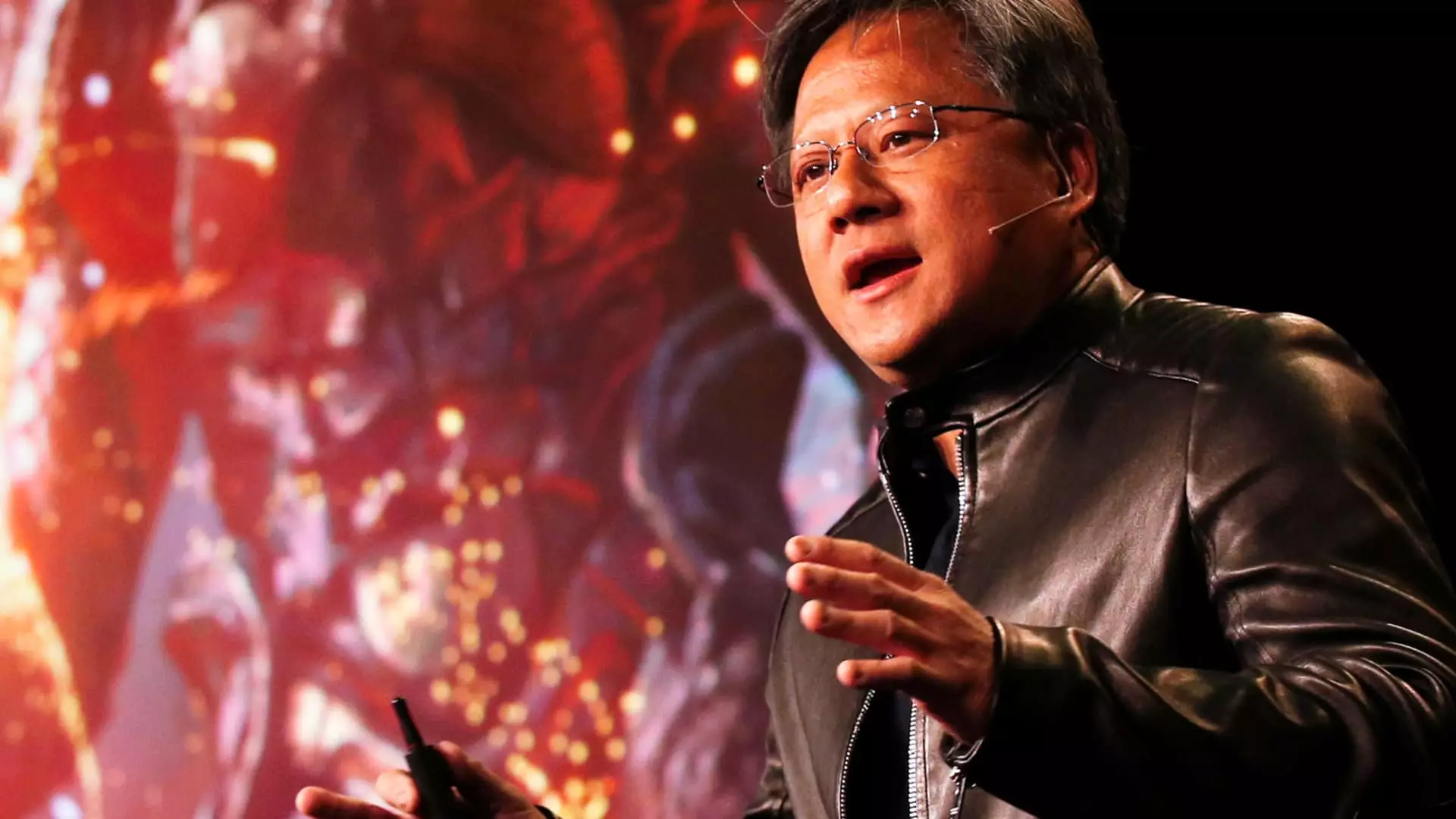The rollercoaster ride of stock prices in the technology sector has seen a significant event with Nvidia at the epicenter. On a recent Tuesday, the renowned semiconductor company saw some recovery in its stock value, but this move came a day after the stock experienced a historic plunge, wiping out an astonishing $595 billion in market capitalization. The catalyst for this immense sell-off was the unexpected introduction of a high-performance, low-cost artificial intelligence model by the Chinese company DeepSeek, which has thrown Nvidia’s dominance in the AI landscape into question.
Nvidia’s stock experienced a staggering decline of 17% on the preceding Monday. This fallout sent ripples through the tech industry, dragging key indices like the Nasdaq Composite down by 3%. The market sentiment shifted rapidly as fears emerged over a potential implosion of the AI stock bubble, primarily fueled by DeepSeek’s revelation that its open-source AI model not only met but reportedly outperformed established models from OpenAI in various assessments. The astounding production cost of less than $6 million starkly contrasts with the billions invested by leading American tech behemoths in their AI advancements.
Such a financial discrepancy has immediate implications for investors reevaluating the long-term sustainability of the heavy spending on AI technologies—an anxiety that was palpable in the recent trading session. Following the initial shock, the overall market sentiment appeared shaky, with major indices reflecting a cautious attitude.
In response to the turbulence initiated by DeepSeek, Nvidia issued a statement acknowledging the advancements made by the Chinese company. A spokesperson for Nvidia commended DeepSeek’s R1 model, indicating an openness to the evolving landscape of AI technologies. This acceptance may be Nvidia’s strategy to reassure stakeholders that competition can spur innovation rather than solely threaten their market position.
Despite the volatility, Wall Street analysts maintained their endorsement of Nvidia’s stock. None opted to downgrade their positions, suggesting a belief in the long-term prospects of the company. Barclays analyst Raimo Lenschow highlighted the potential benefits of the evolving AI landscape, arguing that lower costs associated with more powerful AI models could boost adoption rates considerably across various sectors. This perspective suggests that while immediate market reactions can be severe, they might not reflect the enduring nature of technological advancement nurtured by competition.
However, the positive sentiment from analysts failed to translate into a significant recovery for Nvidia. The company’s shares remain noticeably lower, around 23% down from the all-time high reached earlier in the month. Morgan Stanley’s Joseph Moore reiterated an overweight rating but adjusted the price target for Nvidia shares, reflecting a more cautious approach in light of the new competitive landscape introduced by DeepSeek. He pointed to the possibility of deflationary impacts arising from evolutionary innovations in AI, noting that while excitement around Nvidia remains, the market’s psychology may provoke further volatility.
The events surrounding Nvidia present a unique juncture in the tech industry’s ongoing evolution, particularly in the realm of artificial intelligence. The emergence of competitive, cost-effective models from global players like DeepSeek could redefine the operational and financial expectations of companies at the forefront of AI research and development.
As stakeholders digest the implications of this shake-up, it remains essential to recognize that the landscape is not static. Nvidia may be facing immediate challenges, but it has also established itself as a cornerstone of AI technology, capable of navigating through competitive pressures and continuing to innovate. With multiple aspects influencing market dynamics, the next chapter for Nvidia and the broader tech ecosystem will inevitably shape the future of artificial intelligence and its applications across industry segments. Investors will need to keep their eyes on how Nvidia adapts to maintain its competitive edge while embracing a new era defined by more formidable and cost-effective challengers.

